
Articles
Alligator Farms
Characteristics
Conservation
Diet
Facts
Reproduction
Safety
American Alligator Reproduction
A mound nester with an average clutch size of about 45 eggs, mean hatching length is 22 centimeters (9 inches).
Parental care has recently been documented.
Alligators reproduce or multiply when they mature. This takes place when they are about 7 to 12 years old. By then they are usually about 6.5 ft. (2m). The alligator -breeding season is from April to May, after mating, the females build nets. They usually pick a marshy area for this. The nests are shaped like a mound. They are made of sticks, grass, pieces of plants, and mud. `
Alligator nest are large.
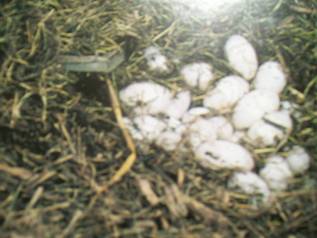
They measure about seven feet across. They may be as high as three- and - a half feet. Females lay their eggs in late June and early July. They lay from twenty to sixty eggs in the center of the nest. Female alligators are not like birds. They do not lay on their nets. They would crack the eggs. Instead, the female alligator covers her eggs with a top layer of mud and grasses. The female then remains close to the nest. She protects it from predators. Raccoons often raid alligator nests to eat the eggs.
It takes the embryos from sixty-three to eighty - four days to be ready to hatch, depending on the temperature inside the nest. The embryos, like the adults, need heat from their surroundings for energy to grow and develop. But no matter how long it takes her offspring to develop, the female stays on guard. The mother alligator will also lunge to scare away enemies, such as raccoons or bears. Those animals would like to dig up alligator eggs for dinner.
The baby alligators make high - pitched sounds. This alerts the mother. 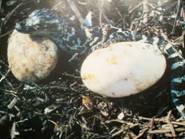
Young alligators are called hatchlings. At birth, they measure between eight and ten inches long. A baby alligator has a special scale that looks like a hard bump on the tip of its nose. The baby uses this scale to help piece the tough inner membrane lining of the eggs and break out of the shell. Some can escape by themselves but mom may need to help out the others. She will crack any unopened eggs by picking them up and rolling them around in her mouth.
She digs them out of the nest. Then, the female usually carries them to the water.
Sometimes the mother gator gently carries her babies in her mouth and releases them into the water.
The young alligators often remain together in a group. This is known as a pod. The alligators in pod stay close to the adult female. Sometimes, they sit on her head and back. Hatchlings may remain with their mother for as long as two years. She will try to protect them from other animals that might kill and eat them.
Life is dangerous for a baby alligator. It spends much of its time hunting for food in shallow water. It has to stay alert for enemies, such as raccoons, snakes, otters, large fish, wading birds, and other animals prey on baby alligators. But many hatchlings still die. Only one out of every ten alligators lives through its first year. Those are not good odds. But alligators have nevertheless survived. If unharmed by humans, they will continue to do so.
By the time it is two years old, the young alligator will be big enough to have fewer enemies. Then a newly hatched clutch of babies moves into the gator hole, the older alligator youngsters will go off on their own. Or they may be chased away by their mother.
With all of its body parts working together, the young alligator will try to stay safe and to find food. It will grow rapidly for the first five or six years and then continue growing slowly for the rest of its life. Clearly, alligators are special. It is important to leave alligators in the wild alone. They can be seen and enjoyed elsewhere. Many zoos have alligators. In some parts of the country, there are alligator farms. Often these places give tours. There are also guided tours through Florida's Everglades. On a warm day, you can see many alligators. Books and films about alligators can also be found there.
Alligators are fascinating. They are among the most powerful reptiles alive. We can study and admire them.
Yet it is always best to do so from a distance. We do not need to fear alligators, but we must respect them.
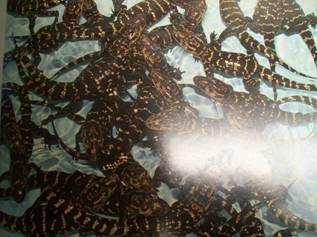
American alligator hatchlings reared in captivity grow twice as fast as wild hatchlings, which has increased the profitability of alligator farming in the United States.
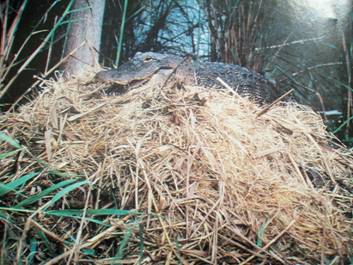
Female alligator guards its nest
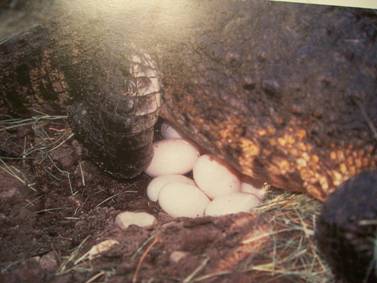
Female alligator lying eggs